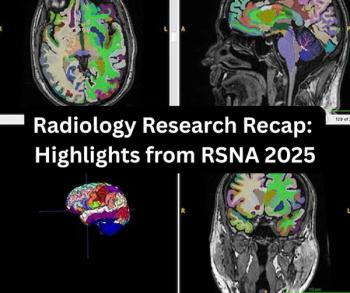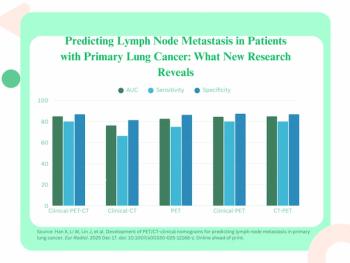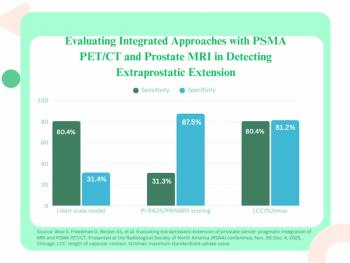
Pulmonary Artery Thrombosis: An Unrecognized Radiation Therapy Complication
Pulmonary artery thrombosis presents differently from acute pulmonary embolism on CT scans.
Patients who experience in situ pulmonary artery thrombosis (PAT) after receiving radiation therapy (RT) have different imaging findings on CT than those that show up with acute pulmonary embolism (PE) – and, if radiologists do not render accurate identification and diagnosis, patients could end up getting the wrong treatment.
PAT does not appear to embolize, said a team of researchers from the University of Texas MD Anderson Cancer Center. Although the condition is very rare, this specific difference from PE points to a different clinical prognosis. The team, led by Jitesh Ajuha, MBBS, from the thoracic imaging department, published their findings and analysis in the Oct. 9
“In situ PAT associated with RT, which to our knowledge has not previously been described in the English literature, has imaging features different from those of acute pulmonary emboli and does not appear to embolize,” the team said. “Awareness of this entity by radiologists can facilitate accurate diagnosis and impact management.”
And, according to Ajuha’s team, 48 percent of in situ PAT cases are not currently mentioned on radiology reports when they first appear on CT.
In order to assess and outline the differences between PAT and PE, Ahuja’s team culled the radiology database on a large teaching hospital, pulling reports that mentioned PAT between 2013 and 2019. Two board-certified, fellowship-trained radiologists retrospectively reviewed the CT studies, all of which used IV contrast and were captured on 16- or 64-MDCT scanners. From the scans, they recorded several PAT CT characteristics: number, location, appearance of filling defects, and presence of associated lung fibrosis.
All total, the team identified 27 patients – 19 men and eight women – for their study population. Most patients – 22 individual, 81 percent – had lung cancer as their primary malignancy. The other five (19 percent) had mesothelioma. No patients had symptoms at the time of their initial PAT diagnosis on CT.
According to their analysis, all PATs were distinctly different from those seen in acute PE because they were eccentric within the involved pulmonary artery and located within the RT volume. Most PATs (93 percent) were solitary and non-occlusive (96 percent). In addition, most (89 percent) formed an obtuse angle to the vessel wall.
In addition, all patients had CT findings of radiation-induced lung fibrosis findings in the lung supplied by the affected pulmonary artery. The initial PAT diagnosis on CT came between 53 and 2,522 days after the completion of RT, the team said. And, on follow-up imaging, no patients were observed to have filling defects develop in other parts of the pulmonary artery, indicating they did not embolize.
This is vital to note given that most patients treated for incidental PE are given anti-coagulants.
“It is important to assess the implication of in situ PAT presumably caused by RT and to distinguish it from true embolic events because the prognosis and management strategies of these two conditions are distinct,” the team said.
Based on what it is included in the radiology reports, they said, clinical teams can decide whether to administer anti-coagulants after reviewing a patient’s symptoms, health status, co-morbidities, and the risks of venous thrombosis, major bleeding, and death.
“For radiologists in clinical practice, awareness of this entity is integral to optimize detection and reporting,” the team concluded.
Newsletter
Stay at the forefront of radiology with the Diagnostic Imaging newsletter, delivering the latest news, clinical insights, and imaging advancements for today’s radiologists.



























